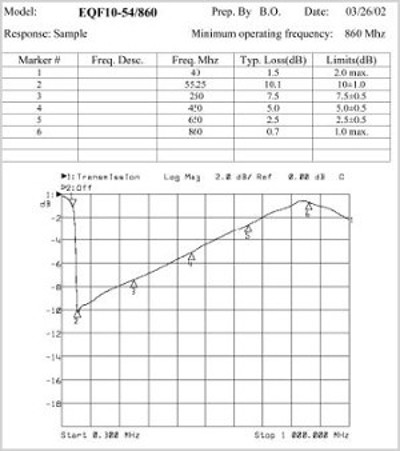 With increased bandwidth beyond 1 GHz, maintaining the correct carrier levels at a subscriber location is becoming more difficult. The challenge is not always widespread and may be limited to certain areas within the physical network, where limits to the system design have been reached. The addition of DOCSIS 3.1 and MoCA technologies has raised the threshold required for in-home equipment performance and also, therefore, for broadband and CATV signal quality.
With increased bandwidth beyond 1 GHz, maintaining the correct carrier levels at a subscriber location is becoming more difficult. The challenge is not always widespread and may be limited to certain areas within the physical network, where limits to the system design have been reached. The addition of DOCSIS 3.1 and MoCA technologies has raised the threshold required for in-home equipment performance and also, therefore, for broadband and CATV signal quality.
All-digital broadband networks are also driving the need for correct signal levels; the tolerance for noise and distortion in these networks is much tighter. Older analog systems had a wider margin of error. Adding to this problem is the increased number of TVs and other devices used. Finally, most techs now have to ensure that each customer's home meets a certain level of performance and must pass a strict performance check before they can leave.
To measure up to these higher expectations, you will want these simple products for making delicate and critical adjustments to signals at the home: attenuators, cable simulators, equalizers, and high pass filters, to name a few.
 These types of products have been around in cable systems for years, but they have also continued to evolve – they may surprise you if you haven't checked them out lately. Most of these products today will have as a minimum feature set: precision seizure contacts, moisture-sealed interfaces, SCTE compliant connector interfaces, and integrated port seals, to name a few.
These types of products have been around in cable systems for years, but they have also continued to evolve – they may surprise you if you haven't checked them out lately. Most of these products today will have as a minimum feature set: precision seizure contacts, moisture-sealed interfaces, SCTE compliant connector interfaces, and integrated port seals, to name a few.
Whether you are looking at high signal strength, tilt, reverse tilt, or any other signal level issue, there is a solution.
As an example, an old trick of the trade was to coil up and stash in the attic 100 to 200 feet of cable, to equalize or flatten signal levels entering the home with excessive positive tilt. This would ensure the signal hitting the TV or set top box would be at the appropriate level. With the right attenuator (ATP or FPA or CS), it is simple and inexpensive to do the same thing without wasting a lot of expensive cable.
 EQF Equalizers
EQF Equalizers
With the introduction of digital video, most set-top manufacturers specify a maximum slope factor in order to function properly. Equalizers provide a correction to excessive cable loss and passive devices, without affecting return frequencies.
High Pass Filters
High pass filters are used to isolate upstream frequencies for subscribers who do not require return path services. High pass filters also prevent ingress noise from propagating back to the node and disrupting active upstream services.
Step Attenuators
Step attenuators provide a fixed level of fl at attenuation within the upstream frequencies only. Low value taps produce the majority of ingress and trouble calls within a typical HFC network. This is due to the lack of sufficient reverse attenuation found in higher-value taps. Applied directly to the tap port, step attenuators provide unity gain with all cable modems and other critical reverse transmission products like digital voice and high-speed Internet. Attenuating the return path frequencies instructs the CMTS to raise the modem transmit level. This provides an improved signal to noise ratio; as the noise floor remains suppressed by the step attenuator.
MoCA Filters
As in-home networking services continue to grow, you need strong protection to give your subscriber the best multi-room DVR experience. Physically isolating the home through the installation of a low-pass filter at the point-of-entry is necessary to avoid interference from nearby MoCA® users, such as a neighbor.This technology prevents interference between homes that use MoCA, and acts as a reflector to minimize MoCA® signal loss in the home.


